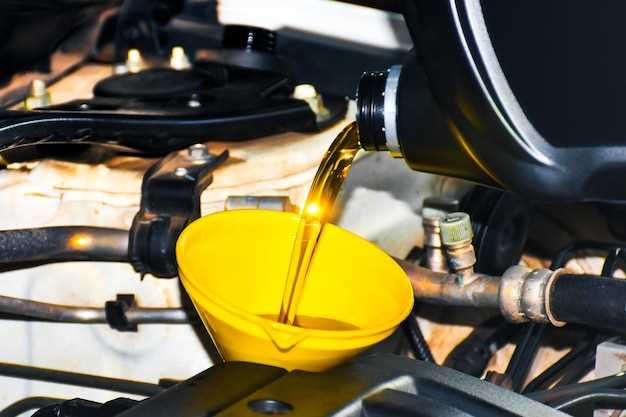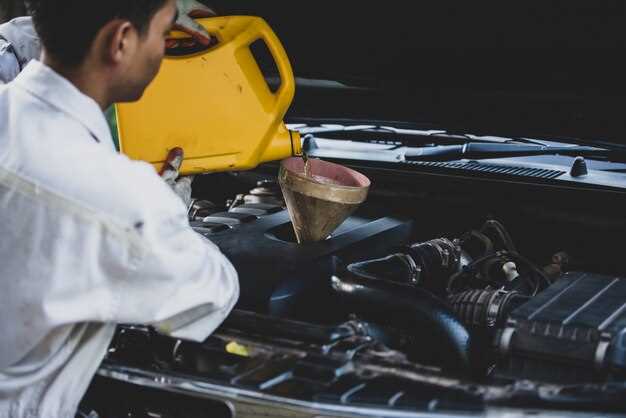
Oil leaks in your truck can lead to serious engine problems if not addressed promptly. Understanding the underlying diagnostics behind these leaks is crucial for maintaining your vehicle’s performance and longevity. Ignoring even a small oil leak can result in larger issues down the road, which may require extensive repairs and cost significantly more than a simple fix.
In this guide, we will explore various methods to identify and repair oil leaks in your truck safely. We’ll cover essential steps in the diagnostic process, helping you to pinpoint the source of the leak, whether it be from gaskets, seals, or other common areas. By following these guidelines, you can ensure your truck remains in optimal condition, preventing oil loss and preserving engine health.
We will also discuss different types of oil used in trucks, emphasizing the importance of using the correct oil type for your specific model. Proper maintenance not only keeps your truck running smoothly but also aids in minimizing the risk of leaks and other issues. Let’s dive into the details of fixing oil leaks effectively to keep your truck performing at its best.
Identifying the Source of Oil Leaks in Your Truck

Identifying the source of oil leaks in your truck is crucial for maintaining its performance and longevity. A small leak can quickly escalate into a larger issue if left unattended. Begin by performing a thorough diagnostics of your vehicle to pinpoint the exact location of the leak.
Follow these steps to identify oil leaks effectively:
- Conduct a Visual Inspection:
- Look under the front and rear of your truck for any oil spots or puddles.
- Check the oil pan area for signs of leakage.
- Examine oil filters and gaskets for any evidence of oil accumulation.
- Utilize Clean Surfaces:
- Use a clean rag to wipe areas around potential leak points.
- Run the engine for a short period, then turn it off. Inspect again for fresh oil.
- Check Engine Components:
- Inspect valve covers, crankshaft seals, and timing covers closely.
- Look for any cracks or worn-out seals that could be causing the leak.
- Verify Connections:
- Ensure that all oil lines and hoses are securely connected and free of damage.
- Loose or cracked lines can lead to significant leakage.
If you suspect a leak is present, it’s often beneficial to clean the area first, then monitor it for new oil accumulation. Taking these steps will help ensure that you identify the leak accurately, allowing for effective repairs. Not addressing oil leaks promptly can lead to deeper engine issues or even catastrophic failure, so it’s essential to act quickly.
Step-by-Step Guide to Repairing Oil Leaks
Identifying an oil leak in your truck can be a straightforward process if approached methodically. Start by parking your truck on a level surface and placing a clean sheet of cardboard or a container under the engine to catch any drips. This will help you see the extent and location of the leak.
Next, inspect the engine compartment and the underside of your truck. Look for any signs of oil accumulation around the oil pan, valve covers, or gaskets. Pay attention to the truck’s seals, as these are common culprits for leaks. Use a flashlight to check areas that are hard to reach or see clearly.
Once you have pinpointed the source of the oil leak, the next step is to clean the affected area. Use an appropriate degreaser to remove any built-up oil and grime. This will provide a clear view of the leak and help ensure that any new sealants or materials adhere properly later on.
Depending on where the leak is located, you may need to replace specific parts. If the leak occurs at a gasket, consider replacing the gasket entirely to ensure a proper seal. For leaks at bolt holes, tightening the bolts may resolve the issue, but be cautious not to over-tighten as this can cause damage.
If the leak is due to a worn seal, such as the oil filter or oil pressure switch, replacing the seal is usually a simple task. Ensure that the new seal is compatible with your truck’s engine specifications. It’s advisable to apply a small amount of oil on the new seal before installation to ensure a tight fit.
After repairs are complete, fill your truck with the appropriate oil. Start the engine and let it run, then check for any new signs of leakage around the repaired area. Monitor the truck over the next few days to confirm that the leak has been resolved. Keeping an eye on oil levels is crucial; this helps detect any further issues early on.
In case you are unable to locate or fix the leak yourself, consulting with a professional mechanic is a wise decision. They have the expertise and tools necessary to effectively diagnose and repair oil leaks in your truck.
Preventive Measures to Avoid Future Oil Leaks

Regular maintenance is crucial for preventing oil leaks in your truck. Start by scheduling routine oil changes according to the manufacturer’s recommendations. Fresh oil not only operates more efficiently but also helps identify potential leaks early.
Inspect all gaskets and seals periodically, as these are common areas where leaks can develop. Ensure that they are in good condition, and replace any that show signs of wear or damage. A proper fit is essential for preventing oil from seeping out.
Keep an eye on your truck’s oil level. Frequently checking the dipstick allows you to monitor oil consumption, helping you detect leaks sooner rather than later. If you notice a significant drop in oil levels between changes, investigate further.
Additionally, pay attention to the condition of hoses and connections. Cracked or brittle hoses can lead to leaks. Use high-quality materials when replacing any components, as inferior quality may not provide sufficient durability.
Finally, avoid overfilling your oil reservoir. Excess oil can increase pressure and lead to leaks. Adhering to the recommended oil level ensures your truck operates smoothly and minimizes the risk of leakage.




